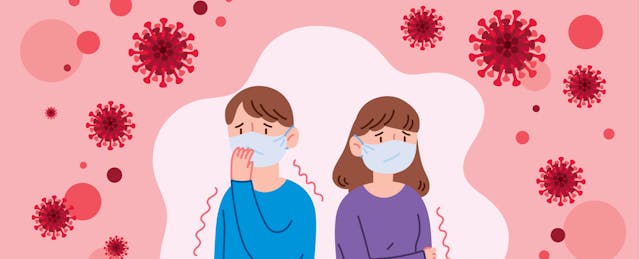For Jason Coe, life is much different under the COVID-19 outbreak. The Cary, N.C., high school freshman has been out of school since March 16, with schools in his state closed until May 15.
North Carolina is not among the states to issue “shelter-in-place” directives, and Jason says that seeing shoppers at Walmart ignore recommendations to stay six feet apart to avoid disease spread has been “scary.”
Jason has stayed away from friends, chatting with some by headset when he plays video games. The 14-year-old says he misses the face-to-face contact that came in the school halls and on the fields during practice for the track and football teams. “That’s one of the things I really looked forward to,” he says.
Though he may feel isolated, Jason is certainly not alone. Millions of students worldwide are home to avoid catching or spreading the disease. And even while physically safe, the deluge of news and information around COVID-19 can be a source of stress and anxiety for children of all ages.
Increased Anxiety
Crisis Text Line, which provides free, text messaging-based counseling services for the U.S., U.K. and Canada, has seen 49 times the number of mentions of “virus,” “COVID-19” or “coronavirus” as of mid-March than in February. The nonprofit usually sees more than 3,000 conversations a day, but in recent weeks that number has been as high as 6,000, according to spokeswoman Ashley Womble.
On March 13, coronavirus was mentioned in 15 percent of all conversations between students and the group’s volunteer counselors, according to the New York-based nonprofit. More than half of people texting about those concerns are in the 18- to 34-year old range. School cancellations and closures contribute to a large part of the anxiety they have shared.
About 80 percent of people messaging Crisis Text Line about the virus add that they feel anxious, compared to about 34 percent of texters overall who say they feel anxious. About 10 percent of them mention finances, including concerns about losing a home, cut job hours and delayed start dates.
Among the activities Crisis Text Line recommends for people experiencing coronavirus-related anxiety are virtual hangouts with friends, silencing news updates, and getting fresh air (as long as one minds social-distancing rules). For students, sticking to basic day-to-day habits (like getting dressed and taking a shower) is key to maintaining some semblance of normalcy.
For parents, the nonprofit recommends alternating childcare shifts with a partner if possible, and sticking to a schedule to create routine for the family.
Helping Kids Be Alright
Other mental health organizations have also offered guidelines concerning COVID-19’s impact on the wellbeing of young people and how parents can talk to their children to alleviate stress related to the outbreak.
The National Child Traumatic Stress Network, the Substance Abuse and Mental Health Services Administration and The National Association of School Psychologists are among the organizations to provide tips online for parents on how to speak with children of different ages about the outbreak.
Shared advice among the organizations include urging parents to model appropriate behaviors for their children. They should encourage, but not force, children to talk about how they feel and what they’ve read about the outbreak. Children under 5 sometimes need to express their emotions indirectly, through play and storytelling. Expression through drawing, exercise and taking breaks from electronics are all effective practices parents can employ.
Some teenagers might not express that they feel anxious or stressed over the disease. Their emotions may come out through more aggressive behaviors, loss of interest in things they previously liked and isolating themselves from the family.
College Students Susceptible to Stress
Student concerns around COVID-19 have impacted content viewed by students on YOU at College, a platform that 110 college campuses use to communicate academic, mental health and well-being resources by app and website.
Nathaan Demers, a clinical psychologist and vice president and director of clinical programs for Grit Digital Health, the company behind YOU at College, says that in the past week seven of the platform’s top 10 pieces of content by views relate to coronavirus. The platform has more than 2,000 articles, multimedia, activities and campus resources focused on student well-being.
Some of the recent most-read content relates to coping strategies—like meditation, breathing techniques and online therapy resources—stigma around COVID-19, sleeping difficulties and at-home workouts. He predicts financial information and online learning will also grow on students’ minds as more classes return from spring break.
College students might be wrestling with disruptions to their routines including lost jobs and financial hardships, loss of roommates and other social networks, and lost campus-based support services like counseling centers and wellness programs. “It’s OK to be grieving the loss of that but still be productive,” Demers says.
For students who have moved home with their parents, Demers advises they discuss ground rules early on, including curfews, chores and drug and alcohol use. He encourages parents to try to talk to their college students about what they’re thinking and feeling. College students can still take time to chat with friends from campus and use online resources from school. “There is so much to process,” he says.
Jason Coe, the North Carolina teenager, says sticking to an exercise routine has helped him relieve boredom. The coaches at his school have used an app to show squats and other activities students can do at home to stay in shape and maintain physical gains made at school. “One you start, it’s easy to keep going,” he says.


